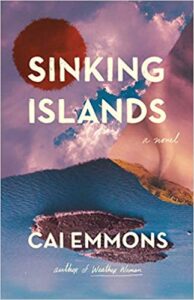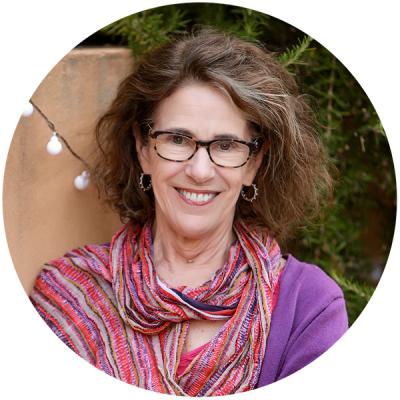Today, Reader’s Entertainment welcomes author Cai Emmons to our blog. Let’s start with where are from, where you live, and is writing your full-time job?
I grew up in New England, the Boston area, and then lived for a number of years in New York City before moving to the West Coast, first California, now the Pacific Northwest. I will always consider myself an East Coast person, because that’s where I came of age, but I have loved living on the opposite coast where I’ve escaped some of the strictures of the East and have felt free to pursue my own path. Three years ago I gave up my teaching job in the Creative Writing Department at the University of Oregon to become a full-time writer.
How long have you been writing?
I have been writing in some form or other since I was eight years old. Through high school I wrote poems, then I college I began writing plays. Playwriting morphed into screenwriting, and eventually I began writing fiction which is my greatest passion and also the kind of writing I feel most suited for.
Describe your typical writing day.
We have a coffee maker in our bedroom which is set to go off at 6:30 a.m. My husband brings me coffee in bed and departs to his study, and I prop myself up and begin to work, writing longhand on pads of lined paper. I don’t check email or answer the phone or do anything that will bring me into contact with the larger world which takes me too quickly away from the dream-state. Sometimes I dive right into writing sentences and scenes; sometimes I take notes in a black spiral notebook about what is upcoming, listing questions I have, proposing what-if ideas, making note of the research I need to do. I write for a few hours until lunchtime, and then my afternoons are often consumed by either typing up what I’ve written, or taking care of the business of being a writer. In and around all of that there is time allocated to exercising and eating, but I try to hold off any socializing until late in the day.
Tell our readers about your latest release.
Sinking Islands is a sequel to my 2018 novel Weather Woman, which introduces the character Bronwyn, a meteorologist who discovers she has the power to change the weather. In Weather Woman Bronwyn begins to experiment with her power, stopping tornados and fires and trying to freeze the Siberian permafrost, but at the end of that book she goes into hiding, worried about the consequences of her actions. In Sinking Islands she is summoned to action again, and she decides to try to teach her skill to people in climate-stressed places around the world. She gathers a small group of people from around the world—Felipe from Sao Paulo where water shortages have been extreme, Analu and his daughter Penina from a sinking island in the South Pacific, Patty from the tornado-ridden plains of Kansas—and she takes them to the wilds of New Hampshire to see what she can impart to them. But for the one fantastical element, it is a realistic novel that explores how we might become more attuned to the Earth and act more collaboratively to address climate change.
What inspired this book?
I never imagined I would write a sequel, but when I was finished with Weather Woman a few readers told me they thought there was more be said about these characters. I resisted, but one woman was particularly insistent, and after a while I realized she was right. There was more to be explored about the relationship between Bronwyn and her mentor Diane, and also I wanted to feature people trying to collaborate, something we human beings often have trouble doing.
Could you share one detail from your current release with readers that they might not find in the book? Perhaps a juicy bit of back-story, or something only you know about a character?
When I was writing Weather Woman, I got to know the glaciologist and climate scientist Jason Box (once featured on the cover of Rolling Stone as the “Ice Maverick”), and he invited me on a trip to Greenland where he was going to be the resident scientist. The images of Greenland in Sinking Islands—the colorful houses on the rocks, the icebergs floating in the harbors, the sled dogs tied up behind houses, etc.—are all taken directly from that trip. And when Diane, the character, goes to Greenland she befriends her landlady, Aka, who is based on a woman I met while I was there, also named Aka.
What has been your hardest scene to write? Any of your books
In my first novel, His Mother’s Son, part of the story is situated in a prison hospice where the main character’s brother had ended up with AIDS. He wants to die, and he begs his sister, who is a doctor, to help him do that. It took me a long time to summon the hutzpah to write both about the prison hospice and about the sister’s dilemma: Should she help her brother commit suicide or not, a complicated question for a doctor. I had spoken on the phone to a hospice prison chaplain, and he had encouraged me to visit the California prison hospice where he worked, but when I got there the prison authorities would not allow me in. So I had to take the plunge and imagine the whole situation as well as I could. Fortunately, I had had some experience with visiting a prisoner in Massachusetts so I knew what the inside of a prison looked and felt like, but still writing that section took a huge leap of imagination and confidence.
Who has been the most difficult character for you to write? Why?
I was very challenged by writing the narrator of a novel I completed recently (due out in 2022, working title Hair on Fire). The challenge was two-fold. First, she is the only first-person novel narrator I have ever written. I tend to favor telling my stories from the perspective of close third person, so this was a real departure, but I knew it was only way this particular story could be told. She, Sybil, is a cynical woman who has had some hard knocks in life. I, by contrast, tend to be quite an optimist, very different from Sybil so, while I really enjoyed inhabiting her tough/vulnerable persona, I found it really challenging to maintain a consistent tone. I am quite happy with the novel now, but it was a journey to get to that satisfaction!
If you could be one of your characters for a day which character would it be? Why?
This question is a no-brainer—I would definitely love to be Bronwyn for a day to experience what it’s like to have her power. I have always dreamed of being able to change the weather, which is why I wrote Weather Woman in the first place, and I can imagine nothing more empowering than being able to bring on rain or snow at will, and then stopping them! I promise I would not bring on any dangerous hurricanes or tornados!
All writers are readers. Are there any particular authors that have influenced how you write and, if so, how have they influenced you?
I think the process of becoming a writer, at least at the beginning but maybe always, is one of being absorbent and wide open to the influence of those writers you read and love. There are few writers I admire more than I admire Virginia Woolf. She amazes me for the way she was willing to experiment with the novel form. Few writers create works as divergent as her works are, one from the other. Consider, for example, Mrs. Dalloway, Orlando, and The Waves—all such different books. I also love the way she tried to capture the nature of human consciousness and thinking, the interiority that is one of the most compelling aspects of fiction for me. For years I have been a fan of Alice McDermott whose work I admire for its introspection and humility and insight into characters who might not stand out in “real” life. Her use of language is elegiac and conveys to me her profound wisdom and fundamental goodness, qualities that are sadly lacking in most quarters these days. And one other writer I must mention is Colum McCann. I’m in awe of his ability to intermingle fictional characters with characters from history, writing stories (novels) that derive their strength from juxtaposition rather than linear storytelling. I am thinking, in particular, of Transatlantic and Let the Great World Spin. His use of language is very evocative in creating both a sense of place and character and, as with the work of McDermott, I find myself mesmerized.
What’s your favorite under-appreciated novel?
There is a novel I read as a girl that made a deep impression on me: The River by Rumer Godden. It tells the story of a young English girl whose family is living in India. She aspires to be a writer and is very observant about the things around her. He world is turned upside down when her younger brother is bitten by a snake and dies. Most people I know have not read this book, but I’ve been doing my best to bring it to people’s attention. Another book that left a deep impression on me, that I have not heard many other people speak about, is Evening by Susan Minot. It is about a woman on her deathbed remembering her past in fevered dream-like scenes, in particular revisiting a brief but powerful love affair with one man. It is a beautiful book.
Do you have a secret talent readers would be surprised by?
I have two little-known talents. The first is that I can ride a unicycle. I learned when I was a kid and I used to ride in the town’s Fourth of July parade. I don’t currently own a unicycle, but I think I could probably still ride one. The other talent I have is a familial talent. We all—or most of us—speak Hoppagoppa fluently. It’s a language akin to Pig Latin, but somewhat more complex and instead of employing “ay” it employs “op”. It’s fun to have a secret language that only family members understand. Because this came from our mother’s side of the family, our father never understood it, and we enjoyed it as a way of keeping secrets from him.
Your favorite go-to drink or food when the world goes crazy!
I am a big fan of vanilla custard. I don’t eat it that frequently, but it has always been my favorite comfort food.
And what is your writing Kryptonite?
I have always hated writing in the presence of other people. Hence, when I was in writing classes, I always hated in-class writing assignments, and as a teacher I have always been cognizant that there may be others like me. You wouldn’t ever catch me writing in a café. I feel free to “get crazy” (an essential part of writing imaginatively) when I am alone, and the presence of others dampens that impulse somewhat.
Thank you so much for taking the time to join us today, Cai.
Cai’s latest release SINKING ISLANDS just released yesterday. Here’s a look.
 Sinking Islands continues the story of Bronwyn Artair, a scientist who possesses the power to influence the natural forces of the Earth. After several successful interventions, including one in Siberia, she has gone into hiding, worried about unintended consequences of her actions, as well as about the ethics of operating solo. But circumstances call her to action again, and an idea takes shape: What if she could impart her skill to other people? Gathering a few kindred souls from climate-troubled places around the world—Felipe from São Paulo, where drought conditions are creating strains on day-to-day life; Analu and his daughter Penina from a sinking island in the South Pacific; and Patty from the tornado-ridden plains of Kansas—she takes them to the wilds of Northern New Hampshire where she tries to teach them her skill. The novel, realistic but for the single fantastical element, explores how we might become more attuned to the Earth and act more collaboratively to solve the enormity of our climate problem.
Sinking Islands continues the story of Bronwyn Artair, a scientist who possesses the power to influence the natural forces of the Earth. After several successful interventions, including one in Siberia, she has gone into hiding, worried about unintended consequences of her actions, as well as about the ethics of operating solo. But circumstances call her to action again, and an idea takes shape: What if she could impart her skill to other people? Gathering a few kindred souls from climate-troubled places around the world—Felipe from São Paulo, where drought conditions are creating strains on day-to-day life; Analu and his daughter Penina from a sinking island in the South Pacific; and Patty from the tornado-ridden plains of Kansas—she takes them to the wilds of Northern New Hampshire where she tries to teach them her skill. The novel, realistic but for the single fantastical element, explores how we might become more attuned to the Earth and act more collaboratively to solve the enormity of our climate problem.





